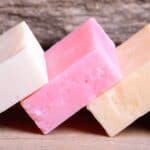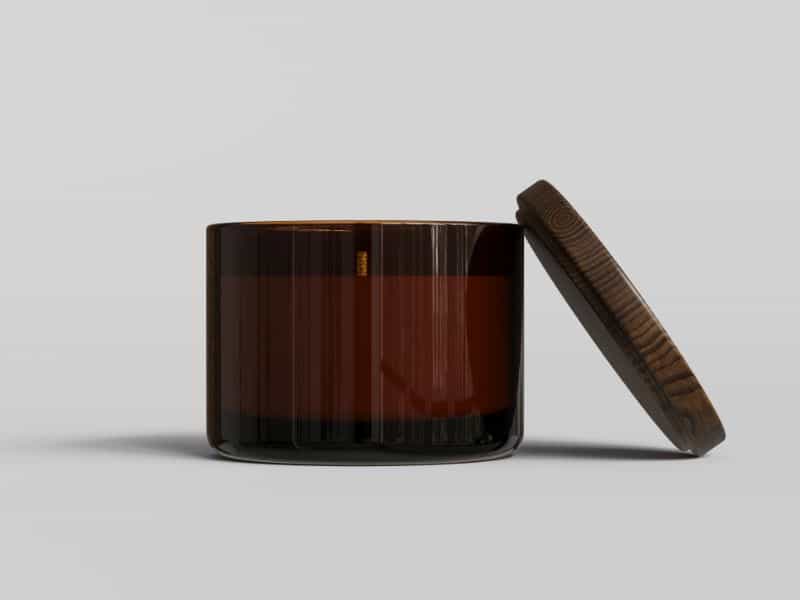Crafting candles at home is a fun and rewarding hobby, but sometimes you can encounter some problems getting them just right. In this article, we’ll explore the reasons behind common burning issues and why sometimes our homemade candles do not burn as well as we’d like.
Homemade candles may not burn well due to incorrect wick size, poor quality materials, improper wax type, or uneven fragrance distribution. Troubleshooting these issues and using proper techniques will help improve your candle’s burning quality.
Understanding the reasons behind burning issues is essential for crafting perfect homemade candles. By choosing the right wick and wax, mixing fragrances and dyes carefully, and ensuring even distribution, you’ll create candles that burn beautifully.
Let’s look at solutions for common problems, helping you enhance your candle-making skills and enjoy a better burning homemade candle.
Reasons Why Homemade Candles May Not Burn Well
Have you made candles but they don’t burn right?
Let’s look at some reasons this can happen:
- Poor quality or incorrect wick size: The wick is the candle’s heart. A bad wick means a bad burn. Pick a high-quality wick that’s the right size for your candle.
- Improper wax type or blend: Different waxes burn differently. Make sure you use the right wax for your candle. Also, blending waxes can affect how your candle burns.
- Insufficient or uneven fragrance distribution: If your scent isn’t mixed well, your candle may not burn evenly. Stir the fragrance into the wax thoroughly for a better burn.
- Too many additives or colorants: Additives can help or hurt your candle. Use only what you need and avoid using too many colorants, which can clog the wick.
Choosing the Right Wick for Your Candle
Picking the right wick is key to a great candle.
Let’s learn about wick types and how to choose the best one.
- Wick types and materials: Wicks come in different materials like cotton, paper, or wood. They also have different braids or cores. Each type burns differently, so choose wisely.
- Picking the right wick size and type: The candle’s size, shape, and wax type are important. Test different wicks to find the best one for your candle. The right wick will create a steady flame and even burn pool.
Remember, when making homemade candles, it’s important to choose the right materials and follow the proper techniques. By doing so, you’ll ensure your candles burn well and fill your space with a lovely aroma.
Selecting the Best Wax for Homemade Candles
There are many types of wax to choose from.
Let’s compare popular options and learn how to pick the right one.
- Soy wax: Soy wax is natural, eco-friendly, and burns slowly. It’s great for candles with a soft scent throw.
- Paraffin wax: Made from petroleum, paraffin wax is affordable and easy to use. It has a strong scent throw but may release toxins when burned.
- Beeswax: Beeswax is a natural, sweet-smelling wax that burns slowly and cleanly. It’s pricier but great for unscented or lightly scented candles.
- Other waxes: There are more wax types, like palm or coconut wax. Research which one works best for your needs.
To choose the right wax, think about your goals. Do you want a strong scent throw? A clean burn? An eco-friendly option? Keep these in mind when selecting your wax.
Mixing Fragrances and Dyes Properly
Fragrances and dyes can make or break a candle.
Here’s how to mix them right.
- Fragrance oils and dyes in candle burning: Fragrances and dyes impact how a candle burns. Too much can clog the wick or create a weak scent throw. Too little may result in an uneven burn.
- Proper mixing and proportions: For fragrances, use about 6-10% fragrance oil per pound of wax. Start with a smaller amount and add more if needed. For dyes, follow the manufacturer’s instructions. Mix both into the wax at the right temperature, usually around 180°F (82°C).
By choosing the right wax and mixing fragrances and dyes properly, you’ll create beautiful, well-burning candles that brighten your home and delight your senses.
Too Many Additives or Colorants
Using too many additives or colorants can negatively impact your candle’s burn.
Let’s explore how these issues can cause problems:
Too much fragrance oil
Overloading your candle with fragrance oil can lead to a weak scent throw or an uneven burn. Excess oil may clog the wick, causing it to flicker or extinguish.
Stick to the recommended 6-10% fragrance oil per pound of wax to avoid these issues.
Too much mica
While mica adds shimmer and sparkle to your candles, using too much can create issues. Overloading your candle with mica can clog the wick, leading to an uneven burn or sooty flame.
Use mica sparingly and follow the manufacturer’s guidelines for the best results.
Too much dye
Overusing dyes can cause wick clogging and an uneven burn. Dyes may also impact scent throw by interfering with the fragrance oil’s performance.
Follow the dye manufacturer’s instructions to ensure proper color concentration without sacrificing burn quality.
Herbs or floral
Adding herbs or dried flowers to your candles may seem appealing, but they can create problems. Herbs and flowers can catch fire, creating a safety hazard. They may also clog the wick, causing an uneven burn.
To safely incorporate herbs or flowers, place them around the candle’s exterior or use them as decoration instead.
By being mindful of the amount of additives and colorants used in your homemade candles, you can avoid common burning issues and create candles that burn well, smell amazing, and look beautiful.
Troubleshooting and Fixing Homemade Candles
Don’t worry if your candles have issues.
Here’s how to fix common problems and improve burn quality:
- Tunneling: If your candle tunnels, try a larger wick or a wax with a lower melting point. You can also use a foil wrap to help the wax melt evenly.
- Weak scent throw: Boost the scent by adding more fragrance oil, up to 10% per pound of wax. Ensure you’re using a high-quality fragrance oil.
- Sooty flame: If your candle produces soot, try a smaller wick or a different wax blend. Ensure the wick is trimmed and the candle is away from drafts.
- Wick won’t stay lit: For a stubborn wick, try a different wick material or size. Check for wax or fragrance buildup, which can clog the wick.
Proper Candle Maintenance and Burning Techniques
Taking care of your candles is essential.
Let’s learn how to maintain them for a great burn:
- Trimming wicks for optimal burning: Keep your wick trimmed to 1/4 inch. A longer wick may cause soot or a too-large flame. Trim before each use for best results.
- Correct burning duration and safety tips: Burn your candle for at least 2 hours or until the entire surface is liquid. Don’t burn for more than 4 hours at a time. Always place candles on a heat-resistant surface, away from drafts and flammable materials.
By troubleshooting and fixing issues, and practicing proper candle maintenance, you’ll enjoy beautiful, well-burning homemade candles that create a cozy atmosphere in your space.
Frequently Asked Questions
Consider the candle’s size, shape, and wax type. Test different wick types, materials, and sizes to find the best fit.
Use about 6-10% fragrance oil per pound of wax, adjusting the amount based on personal preference and scent strength.
Use high-quality fragrance oils, mix them thoroughly into the wax, and ensure you’re using the right wax type for optimal scent throw.
Yes, mica can be used to add shimmer and sparkle, but use it sparingly to avoid clogging the wick and causing burning issues.
It’s best to avoid placing herbs or dried flowers directly in the wax, as they can catch fire or clog the wick. Instead, use them as decoration around the candle’s exterior.
Conclusion
In conclusion, crafting homemade candles that burn well is an achievable goal with the right knowledge and techniques. By selecting the right wick and wax, carefully mixing fragrances and dyes, and avoiding common pitfalls like using too many additives or colorants, you can create beautiful, well-burning candles.
Remember to practice proper candle maintenance and follow safety guidelines to ensure the best burning experience. With these tips and tricks, you’ll be well on your way to mastering the art of candle-making and enjoying your own delightful creations.






